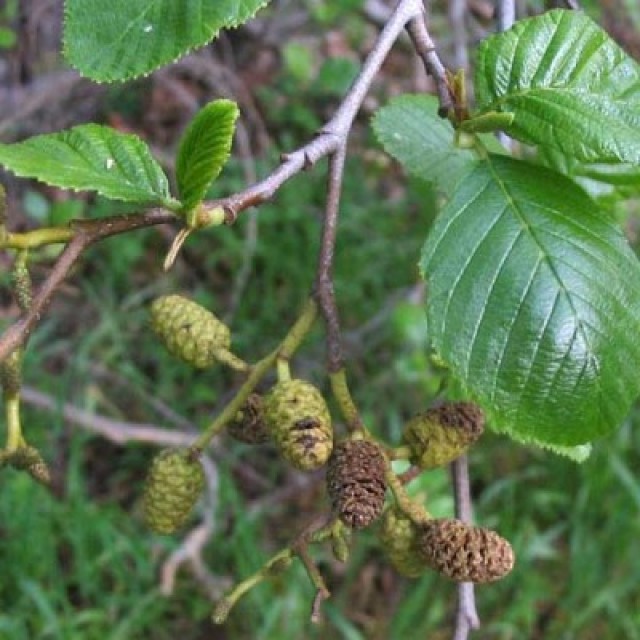COMMON NAME
White alder
SCIENTIFIC NAME
Alnus rhombifolia
ALSO KNOWN AS
California Alder, Sierra Alder
Plant family
Birch (Betulaceae)
Plant group
Deciduous Trees and Shrubs
White alder is a fast-growing deciduous tree. The fragrant, light yellow-green leaves have very small, soft hairs on the underside. On young trees, the bark is pale gray and smooth becoming dark and scaly as the tree ages. The flowers are catkins -- with the female catkins resembling very small conifer cones. The fruit is a samara (sometimes called a helicopter or wingnut) that contains a small nut.
39 reports
17+
OBSERVERS
39+
OBSERVATIONS
Identification hints
White alder typically grows 30-75 feet high, with straight trunks are 1-2 feet thick. The branches start about halfway up the trunk. The edges of the 2-4 inch leaves curl slightly toward the under surface. Male catkins are 1-4 inches long, and are produced in clusters of 2-7. Pollination occurs in early spring, before the leaves emerge. The small winged seeds disperse through the winter, leaving the old, woody, blackish 'cones' on the tree for up to a year after.
Did you know?
White Alders grow naturally along river banks and canyon streams and are often planted as park trees. White Alder provides forage for many wildlife species. Mule deer eat its twigs, leaves, and buds, while American beavers use its bark for food and building dams and lodges.
DISTRIBUTION IN TH U.S.
There is no information available about this species.
HABITAT
There is no information available about this species.
See Menu
Budburst is a project of the
Chicago Botanic Garden
One of the treasures of the
Forest Preserves of Cook County
Creative Commons
BY-NC-SA 4.0
- 2021 Chicago Botanic Garden. All Rights Reserved.
- Terms of Use
- Privacy Policy
- Data Sharing and Citation Policies
- 2021 Chicago Botanic Garden. All Rights Reserved.



